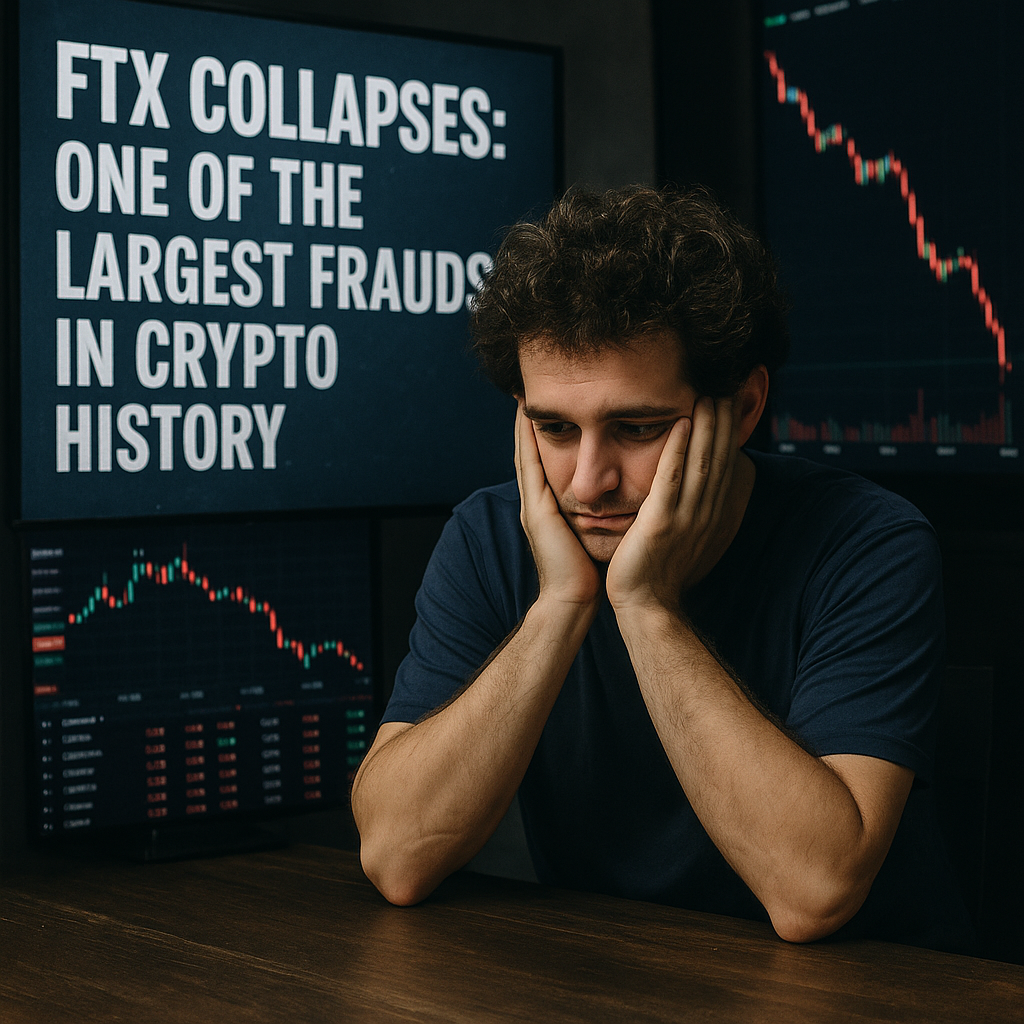FTX Collapses: One of the Largest Frauds in Crypto History
In November 2022, the cryptocurrency world was rocked by the sudden and dramatic collapse of FTX, once the second-largest crypto exchange in the world. Within days, FTX went from being valued at over $30 billion to filing for bankruptcy — triggering panic across the industry, wiping out billions in user funds, and prompting criminal investigations.
This event is now widely seen as one of the largest financial frauds in crypto history, drawing comparisons to the collapse of Lehman Brothers and the Bernie Madoff scandal. Here’s what happened, why it matters, and what the future could look like.
The Rise of FTX and Sam Bankman-Fried
FTX was founded in 2019 by Sam Bankman-Fried (SBF), a former Wall Street quant and MIT graduate. In just three years, the platform became a dominant force in crypto trading, attracting institutional and retail users alike.
FTX offered:
-
Spot and derivatives trading
-
Tokenized stocks
-
Leveraged products
-
A sleek UI and low fees
-
Strategic sponsorships (e.g., FTX Arena, Tom Brady, Major League Baseball)
SBF became a celebrity entrepreneur, frequently appearing on CNBC, meeting with lawmakers, and positioning himself as a pro-regulation voice in crypto.
But behind the scenes, things were unraveling.
What Led to the Collapse
In early November, a leaked balance sheet from Alameda Research — a trading firm also founded by SBF — revealed troubling signs:
-
A large portion of Alameda’s assets were made up of FTT tokens, issued by FTX itself.
-
The firm had borrowed heavily against these illiquid assets.
-
It raised major concerns of circular financing and lack of diversification.
When Binance CEO Changpeng Zhao (CZ) publicly expressed concern and announced plans to sell Binance’s FTT holdings, a massive bank run ensued.
-
FTT price plummeted over 80% in days.
-
FTX users withdrew billions, overwhelming the platform.
-
FTX halted withdrawals and declared insolvency soon after.
-
On November 11, FTX filed for Chapter 11 bankruptcy.
Key Issues and Allegations
What initially appeared to be poor risk management quickly escalated into allegations of fraud and misappropriation of customer funds:
-
Commingling of user funds: FTX allegedly transferred billions in customer deposits to Alameda Research without disclosure.
-
No proper accounting or board oversight: Internal systems were chaotic, with SBF and a small group controlling access to billions.
-
Lack of separation: FTX and Alameda operated as one opaque entity, despite being presented as separate.
-
Political donations and lobbying: Millions were spent on campaigns and influence efforts, muddying regulatory trust.
Newly appointed CEO John J. Ray III, who oversaw Enron’s post-collapse restructuring, stated: “Never in my career have I seen such a complete failure of corporate controls.”
Impact on the Crypto Ecosystem
The ripple effects were immediate and widespread:
-
Crypto prices plunged: Bitcoin dropped below $16,000 for the first time in years. Ethereum also sank.
-
Contagion risk spread: Companies like BlockFi, Genesis, and Voyager faced solvency issues due to exposure to FTX.
-
Loss of trust: Users pulled billions from centralized platforms. “Not your keys, not your coins” regained popularity.
-
Increased scrutiny: Governments, especially in the U.S., began preparing tighter regulatory measures for crypto firms.
Regulatory and Legal Fallout
Multiple investigations were launched globally:
-
U.S. Department of Justice (DOJ) opened criminal proceedings.
-
SEC and CFTC began separate probes into securities and commodities violations.
-
Bahamas authorities arrested Sam Bankman-Fried on December 12.
-
Charges include wire fraud, conspiracy, money laundering, and campaign finance violations.
The fall of FTX undermined years of efforts by crypto proponents to gain mainstream legitimacy and made regulators more determined than ever to impose tighter oversight.
Lessons for Investors
The FTX scandal is a reminder of key principles in crypto investing:
-
Self-custody is king: Store assets in hardware wallets rather than trusting centralized platforms.
-
Due diligence is non-negotiable: Even seemingly reputable firms can hide deep flaws.
-
Avoid chasing hype: Fame, celebrity endorsements, and sponsorships are not signs of solvency.
-
Diversification matters: Exposure to one platform or token can create catastrophic losses.
-
Transparency is critical: The lack of on-chain verifiability for centralized exchanges is a major risk.
The Future of Crypto Post-FTX
Despite the damage, many in the industry see this as a turning point:
-
More DeFi adoption: Trustless, transparent systems may gain favor over centralized players.
-
Push for regulation: Clear rules could protect consumers and rebuild trust.
-
Better risk management: Investors and institutions will likely demand stronger controls and proof of reserves.
-
Reputation rebuild: Legitimate projects will need to work harder to demonstrate credibility and separate from bad actors.
Conclusion
The collapse of FTX in November 2022 marks a seismic moment in the history of cryptocurrencies. It exposed deep vulnerabilities in centralized platforms, shattered investor confidence, and triggered one of the most high-profile fraud investigations in the sector to date.
While the damage is severe, this crisis could ultimately accelerate crypto’s maturation — forcing reforms, innovation in transparency, and a clearer distinction between speculative chaos and long-term utility.
Crypto isn’t dead. But its future will look very different from the era of unchecked empires and celebrity-led hype.
